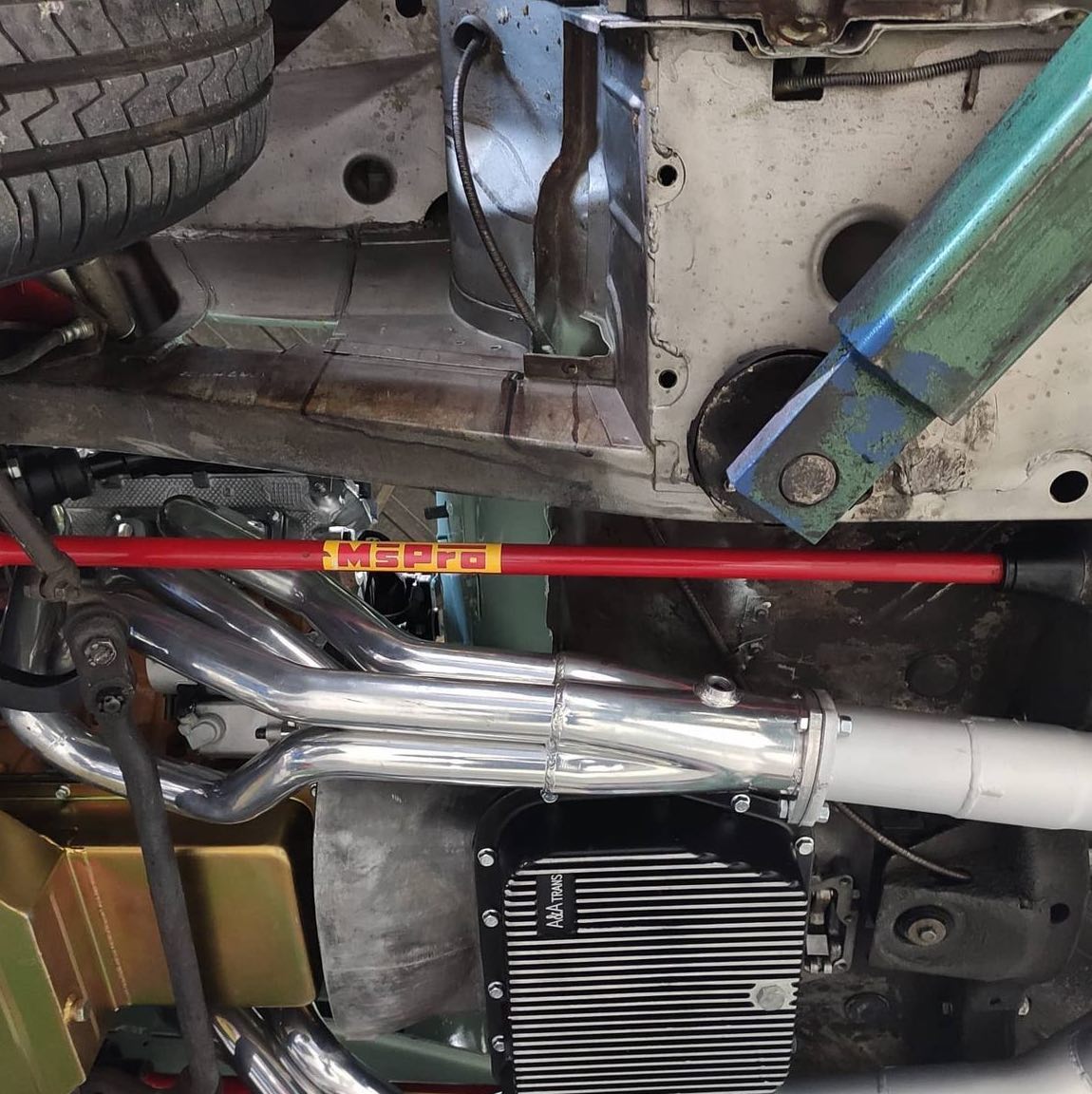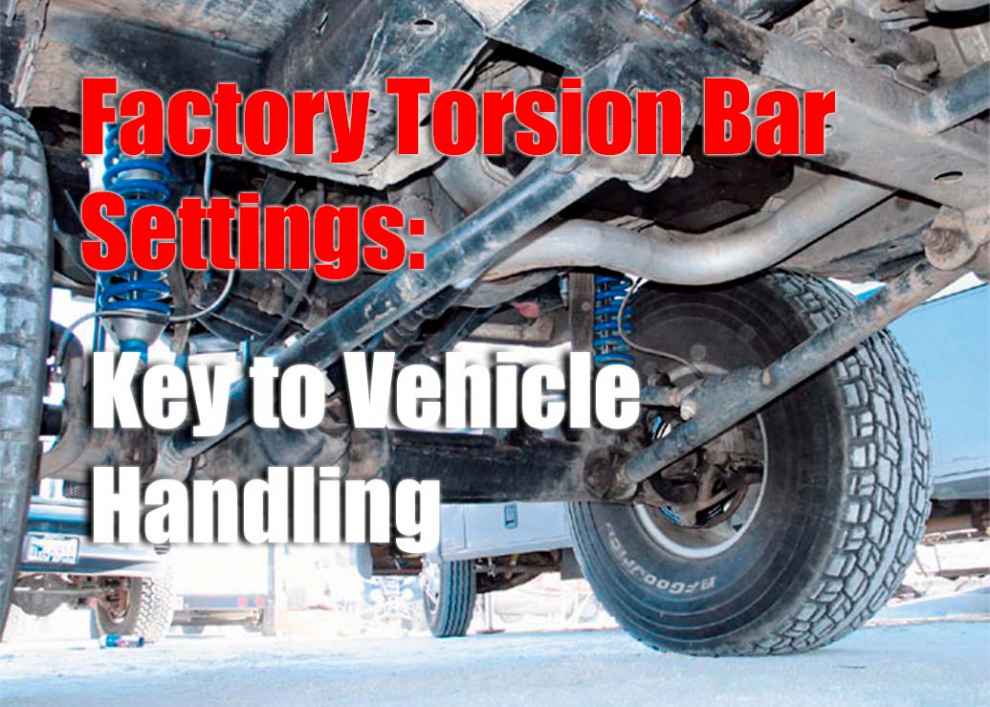Setting the torsion bar in a Jeep is an essential aspect of vehicle maintenance that directly impacts the suspension system, ride height, and handling of your off-road beast. The settings of the factory torsion bars are pivotal in shaping the overall driving performance and the level of comfort you encounter while on the road. The following article aims to provide you with an insightful analysis and understanding of how these settings impact various parameters such as alignment, suspension travel, load-bearing capacity, and overall functionality. Whether you are an experienced mechanic or a Jeep owner who loves to fiddle around with your vehicle’s mechanical aspects, this comprehensive guide will serve as your manual to understand the complexities involved in torsion bar settings. It will run through why factory torsion bar settings matter, how they can be adjusted for better performance, common problems encountered due to incorrect adjustments, and tips for maintaining optimal performance levels for your beloved Jeep.
Understanding Factory Torsion Bar Settings and Their Impact
The factory torsion bar settings form the backbone of a vehicle’s suspension system, particularly in Jeeps renowned for their off-road capabilities. These settings are meticulously calibrated to balance ride quality with handling efficiency. The torsion bar, essentially a type of spring, controls the vehicle’s ride height and influences its response to various terrain challenges. Adjusting these settings can significantly affect vehicle stability, tire wear, and even fuel efficiency. A well-set torsion bar ensures that the vehicle maintains optimal contact with the road or trail, providing a smoother ride while enhancing control and safety. It’s crucial for Jeep owners to comprehend the mechanics behind these settings to make informed decisions about adjustments that can lead to improved performance, especially in off-road scenarios where terrain demands can vary dramatically.
Step-by-step Guide to Adjusting Torsion Bars

Lift the Vehicle: Safely elevate your Jeep using a jack and secure it with jack stands. Ensure it’s stable before proceeding.
Locate the Torsion Bars: Identify the torsion bars, typically found along the vehicle’s underside, connected to the suspension.
Prepare Tools: Gather all required equipment, such as a torsion bar tool and a torque wrench, for the task.
Loosen Adjustment Bolts: Carefully loosen the bolts on the torsion bar using the torsion bar tool.
Adjust to Desired Height: Turn the adjustment bolt to set the ride height. This must be done incrementally to avoid over-adjustment.
Equalize Both Sides: Ensure both sides of the vehicle are adjusted to the same height for balance and alignment.
Retighten and Torque: Once the desired height is achieved, retighten the adjustment bolts to the manufacturer’s specified torque.
Inspect and Test Drive: After adjusting, inspect the vehicle for any issues and take it for a test drive to assess the new settings.
Common Issues and Troubleshooting Torsion Bar Settings
Improperly adjusted torsion bars can lead to several issues, affecting both the performance and safety of your Jeep. Common problems include uneven tire wear, poor handling, and a rough ride. In extreme cases, incorrect torsion bar settings can cause suspension components to fail under stress. Troubleshooting these issues involves inspecting the torsion bars for signs of wear or damage, checking for uneven ride height between the sides of the vehicle, and verifying that the torsion bars are adjusted to the manufacturer’s specifications. If the vehicle continues to exhibit problems after adjustment, it may be necessary to consult a professional or consider replacing the torsion bars if they are excessively worn or damaged.
Maintenance Tips for Optimal Torsion Bar Performance
Regular maintenance of your Jeep’s torsion bars is key to ensuring long-term performance and reliability. This includes periodic checks and adjustments to maintain proper alignment and ride height. Applying lubricant to the adjustment points of the torsion bar helps in averting rust and simplifies subsequent modifications. It’s also important to regularly inspect the bars and the surrounding suspension components for signs of wear or damage, especially after extensive off-road use or exposure to harsh environments. Keeping an eye on the overall condition of your vehicle’s suspension system, including shocks and bushings, will help in maintaining the optimal performance of the torsion bars and ensure a comfortable and safe driving experience.
Conclusion
Understanding and correctly setting your Jeep’s torsion bars is vital for achieving the best possible performance, comfort, and safety. This guide has provided an overview of factory torsion bar settings, their impact on your vehicle, and practical advice on adjustment, troubleshooting, and maintenance. Regular attention to these elements will help ensure that your Jeep is always ready to tackle any terrain, whether you’re cruising on the highway or conquering rugged off-road trails. Remember, while adjustments can be made at home, consulting a professional is advisable for complex issues or when in doubt, ensuring your Jeep continues to be a reliable and high-performing companion on all your adventures.

Add Comment